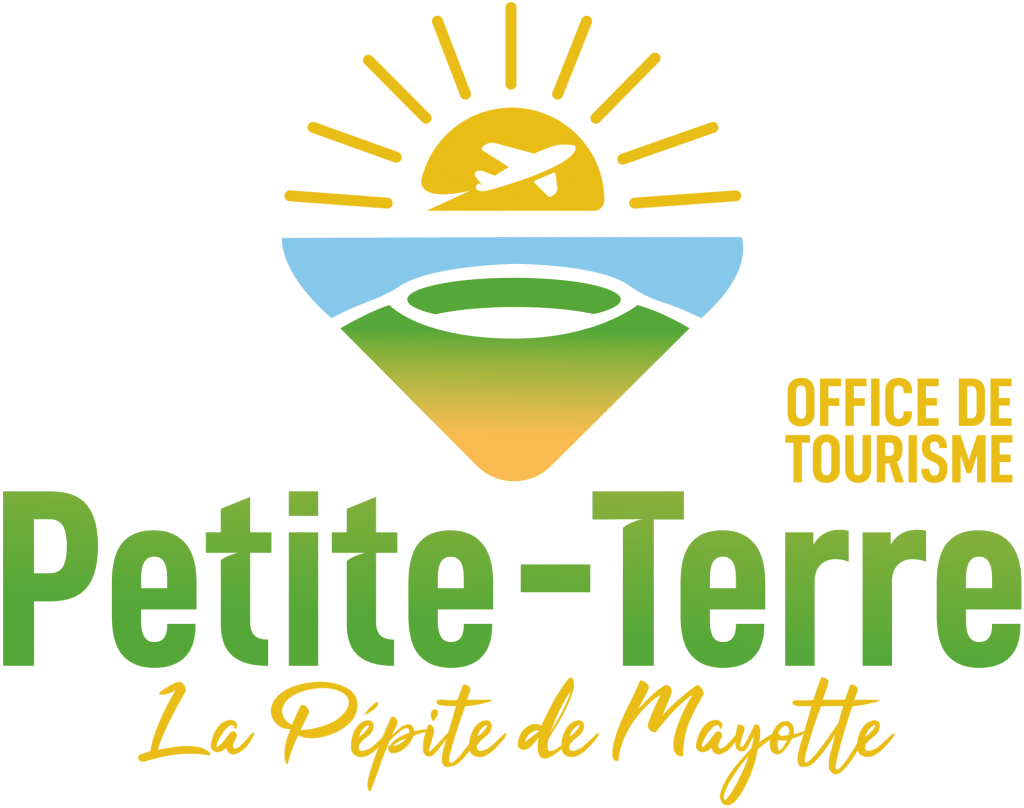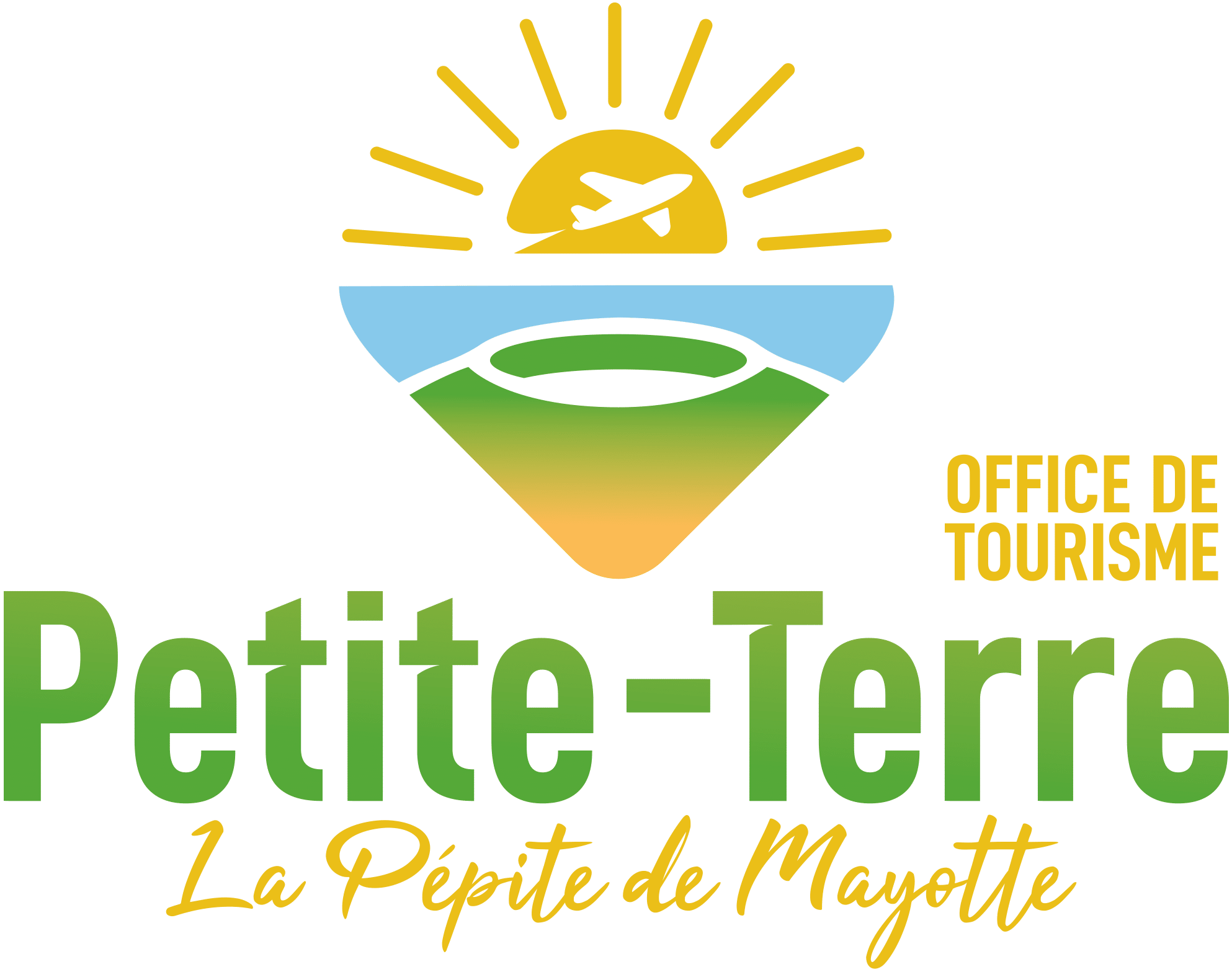Article de Marina Chaffanjon de www.lademoisellepaysanne.com
Mayotte consists of two main islands: Grande-Terre (literally translated as the Big Land), and a smaller island, Petite-Terre (or the Small Land). The two are connected by regular barge services running every 30 minutes. Despite this proximity, people living on the Big Land rarely pay a visit to their neighbours unless their destination is the airport located on its southern tip. I decided to discover what it is out there for the « Big-Landers » on the Petite-Terre apart from a departure-arrival hall.
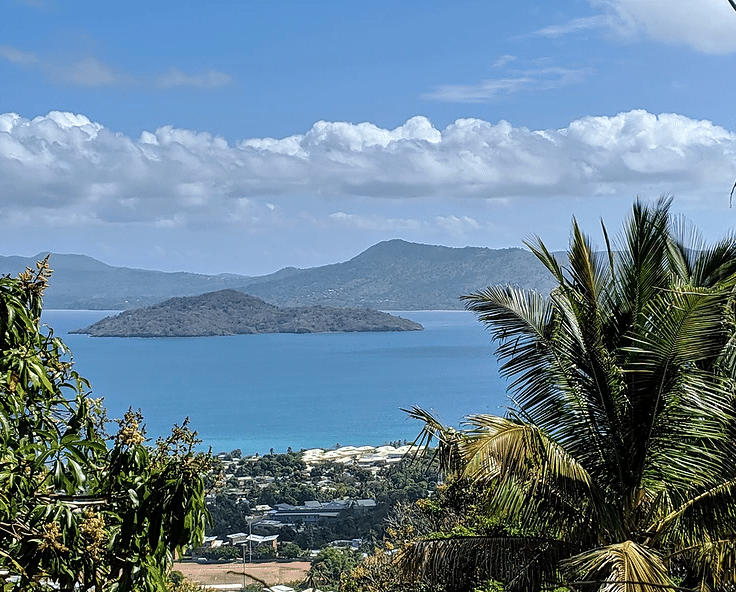
To start with, Mayotte is a small island (you can read more about it in my article Caribou to Mayotte), so every now and then we, its habitants, need to « change the air » as the French say. If you just want to try something new for a weekend without ruining your family budget, why not venture to the island next-door? I was lucky to be accompanied in my Small-Land-Discovery-Trip by the Tourist Office of the Petite-Terre because without them I would have never guessed how many treasures this island is hiding. To be honest, before I, like many other expats living in the capital of Mayotte Mamoudzou, used to think that our smaller neighbour is so tiny that there is not much to see apart from the Moya Beach and the Dziani Lake. I was pleasantly surprised to see that I was wrong! Moreover, because the administrative centre of Mayotte used to be on the Small Land, a lot of historical buildings of colonial architecture are located on this little island.
Here is a list of places to visit, and frankly speaking, there is enough to cover over a couple of days, if not more. It all depends on how active you like your days to be.
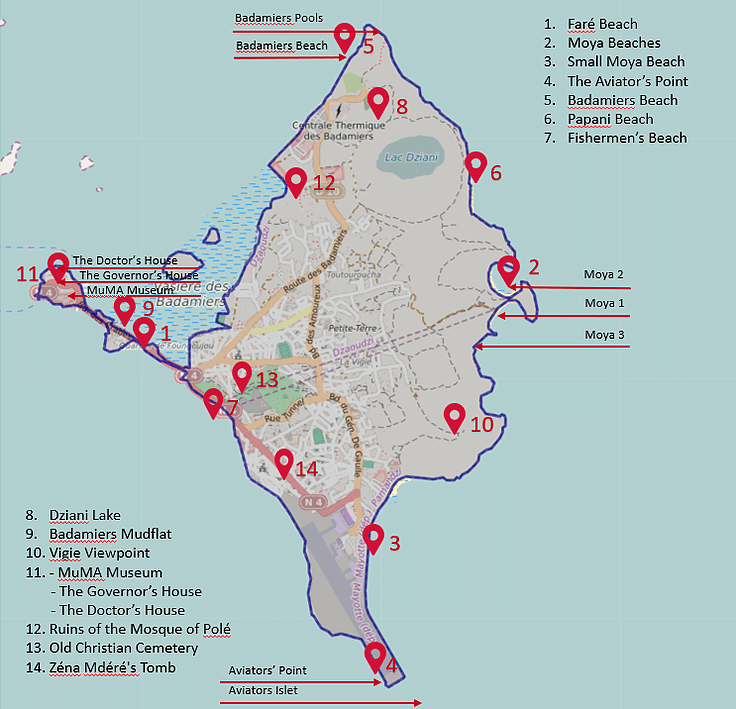
BEACHES
Despite the small size of the island, or probably even thanks to it, there is no lack of nice beaches on it. What is more, you can enjoy them not only during the day but also during the sunset, by easily crossing the island from West to East (just about 5 km). Not all of them are easily accessible by car though, but getting there is part of the adventure.
Faré Beach (1 on the map)
Faré Beach (1 on the map)

Le Faré café et bar
This is probably one of the most popular beaches on the Small Land because of its proximity to the barge and a nice café-bar called Le Faré from where you can contemplate the sunset. There is also a small water-sports station where you can rent among others a jet-ski and go to a little islet of white sand next to the bar. Although The Faré Beach is great during the week, beware that on the weekend it is full of people because of its relatively small size.
This is probably one of the most popular beaches on the Small Land because of its proximity to the barge and a nice café-bar called Le Faré from where you can contemplate the sunset. There is also a small water-sports station where you can rent among others a jet-ski and go to a little islet of white sand next to the bar. Although The Faré Beach is great during the week, beware that on the weekend it is full of people because of its relatively small size.
Moya Beaches (2 on the map)
Plural form in the word « beach » is not a typo, there are actually three coastlines bearing the same name. I have had a chance to only see the first two and I definitely recommend them! The road to these natural pearls is not easy because the last part of the route is unpaved and goes through the forest. Still, the normal passenger car can pass there. Otherwise, you can also hike here from the Dziani lake. To pass from Moya 1 to Moya 2, walk through a small path indicated by a baobab. The coastlines of both beaches are large and curvy and the water is calm, but the main attraction lies elsewhere – these natural bays are a favourite egg-hatching spot for giant turtles (about 1m2) that you can easily see in the sea. They come here almost every night, dig big pits and leave their eggs in the warm sand. During the high tide, their little offsprings break the egg shell and start their dangerous trip to the sea. Out of 1000 only 1 survives to adulthood. The presence of humans around, on the one hand, protects the little ones as they are less attacked by birds, but on the other hand, one can not say that humans are being nice to them. Unfortunately, we hear stories about poaches frequently digging out the eggs at night.
Moya 3, which I have not yet had a chance to see, is a white sand creek that is only accessible by foot during low tide from Moya 1. And so, you can literally spend a whole day discovering just the three Moya beaches: from the low tide to the high one, you will have something to do.
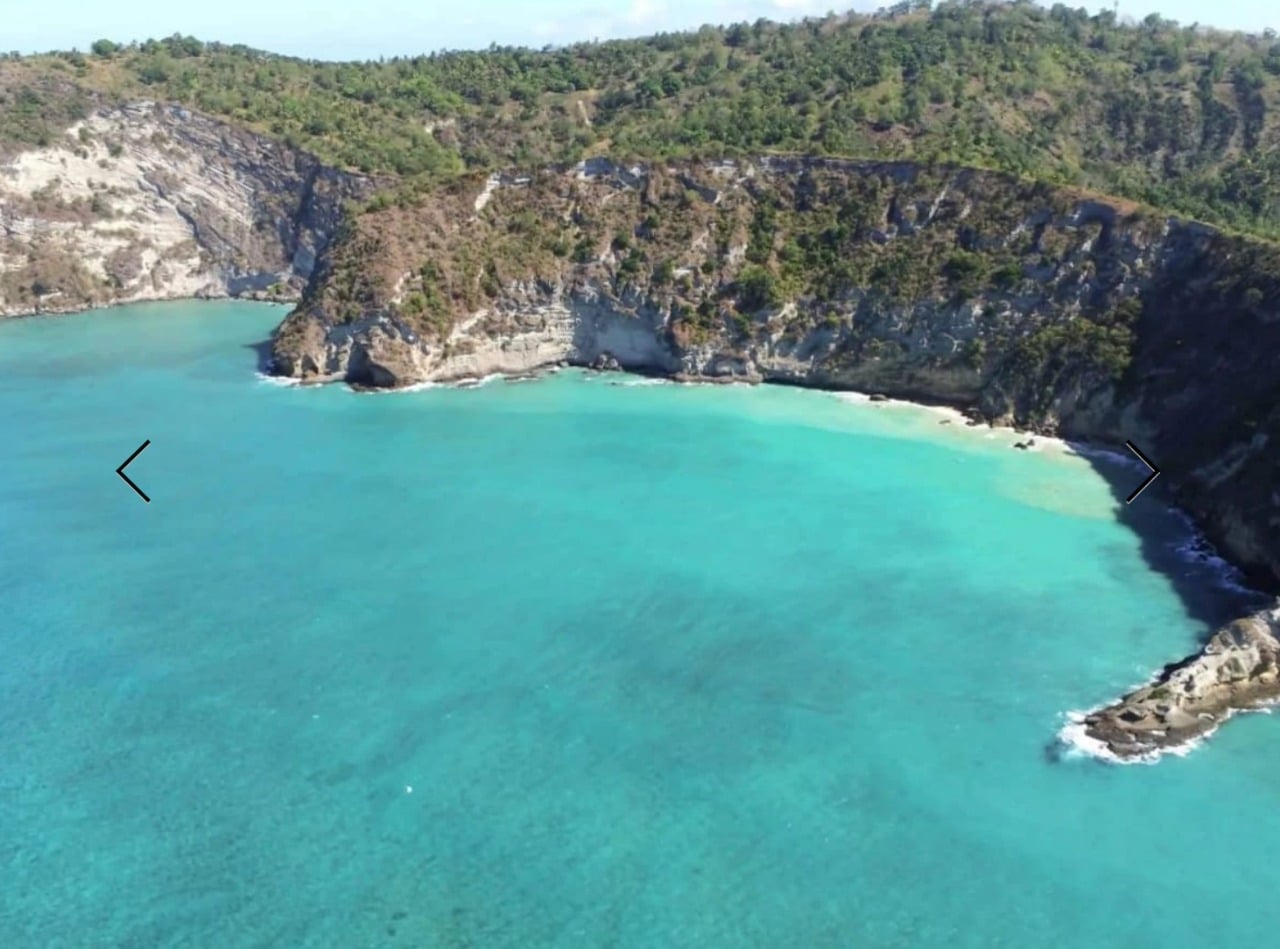
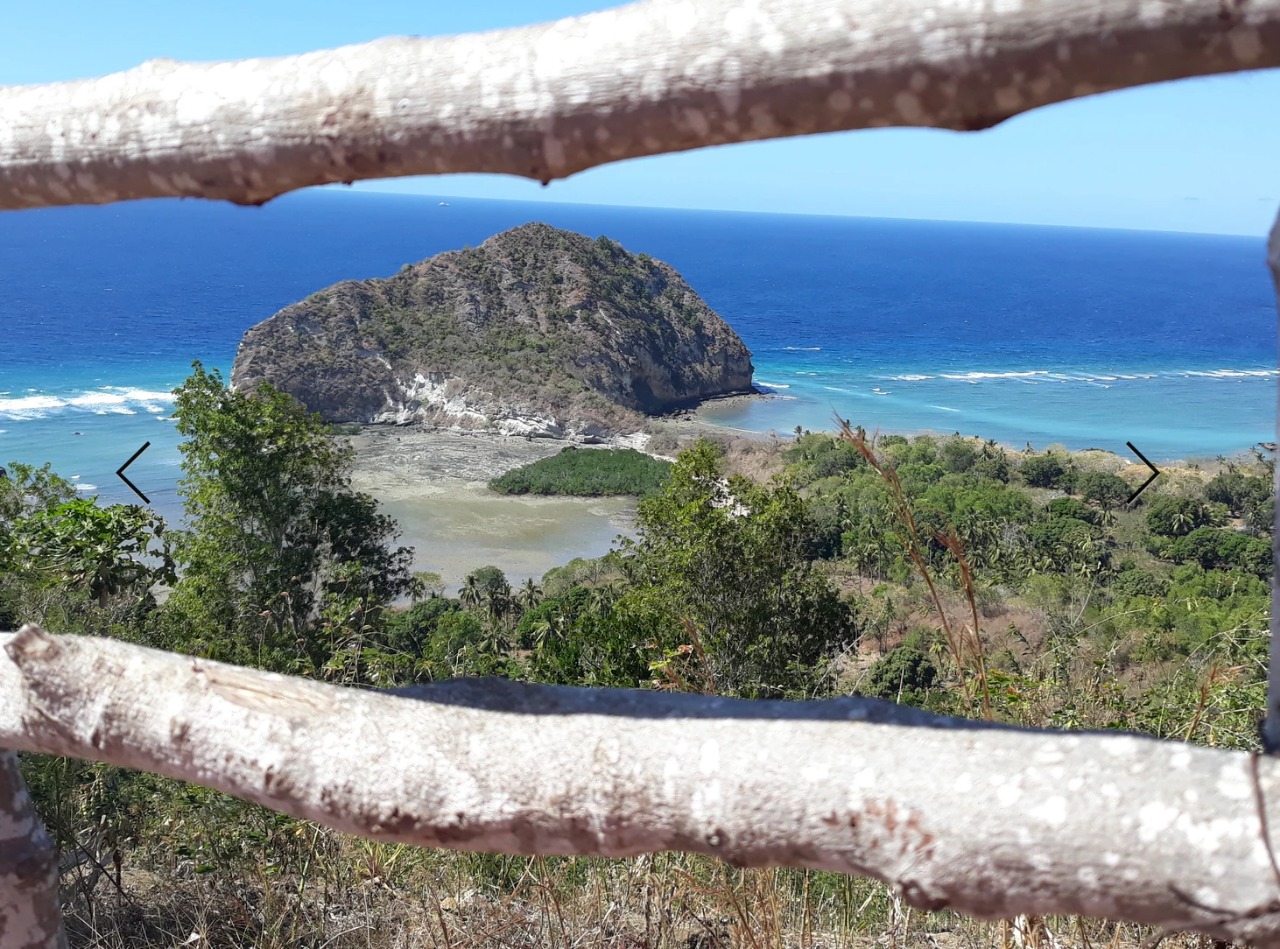
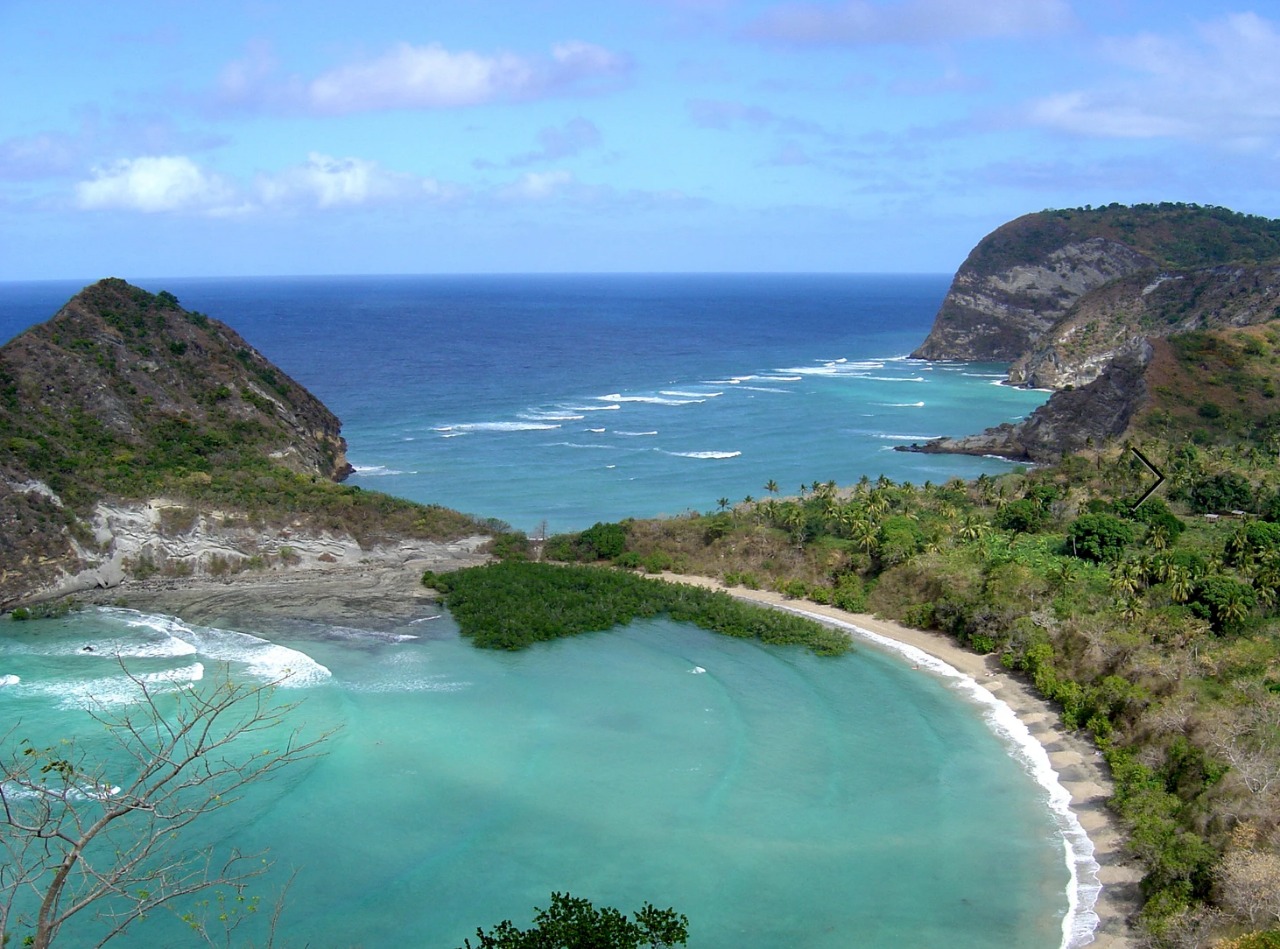
Small Moya Beach (3 on the map)
This is probably one of the most popular beaches on the Small Land because of its proximity to the barge and a nice café-bar called Le Faré from where you can contemplate the sunset. There is also a small water-sports station where you can rent among others a jet-ski and go to a little islet of white sand next to the bar. Although The Faré Beach is great during the week, beware that on the weekend it is full of people because of its relatively small size.
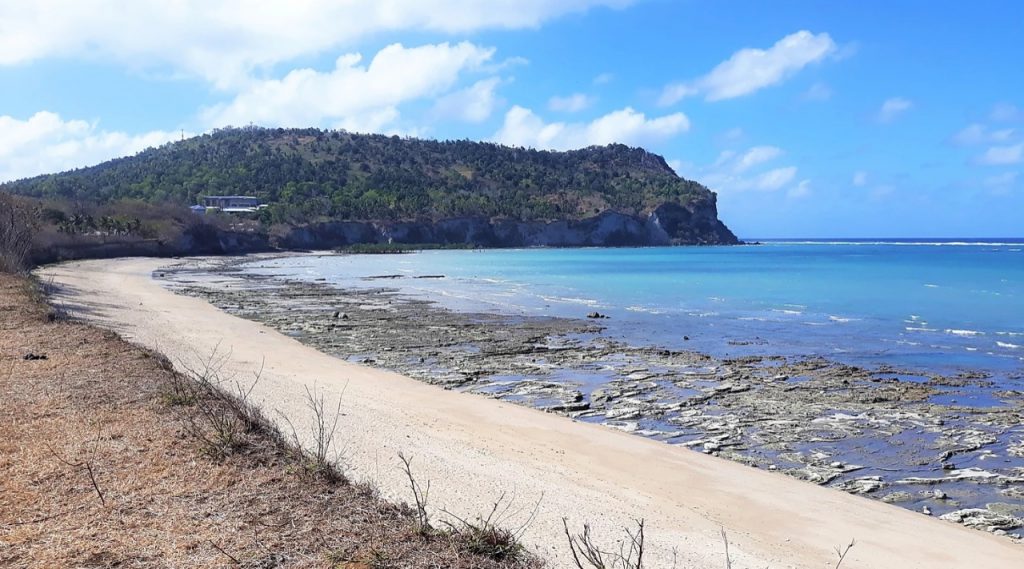
The Aviators' Point (4 on the map)
On the other side of the airport landing strip, there is another beach, which is great for a walk at low tides. You start off from the sign « Danger » (you need to be careful with the tide, but don’t worry, it’s not dangerous), and walk till the beach, or Sandravangue as it is named by the locals. At the end of the sand strip you walk in the water to reach the so-called Aviators’ Islet of white sand that shows up only during low tides. If you are afraid of missing the tide, you can also rent a kayak by contacting the Kayak Association of Petite-Tere.
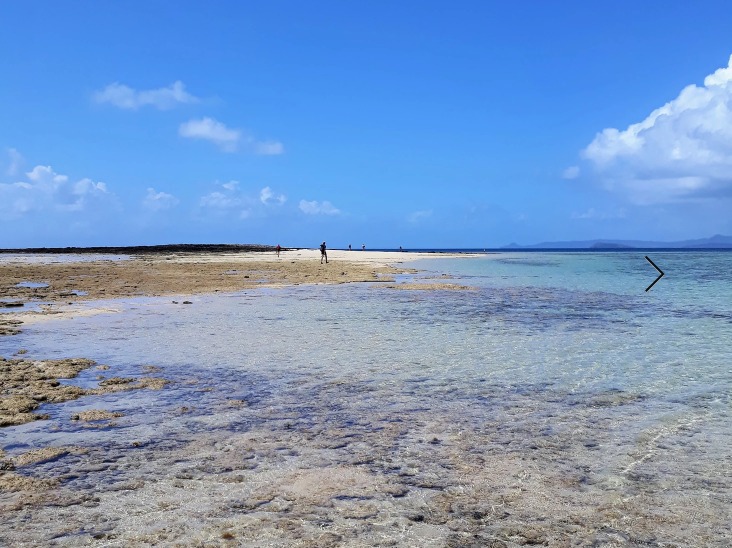
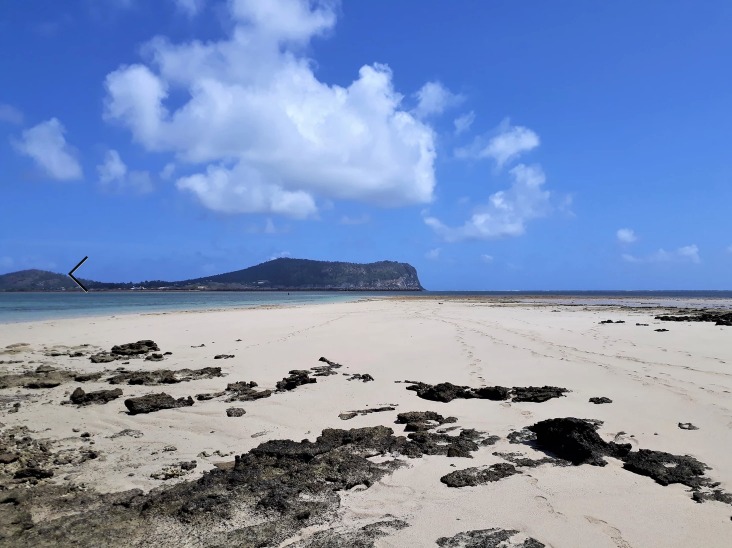
Badamiers Beach (5 on the map)
The beach is located in the North of the island and faces the Grande-Terre. By itself, it is not particularly attractive because of the Total petrol factory nearby and its rocky nature. During low tide, one can clearly see that the bottom of the beach is not sandy, but forms some kind of holes of rock mixed with black sand and mud. I wouldn’t recommend this beach for swimming and sunbathing as such, BUT during big tidal retreats its pits get filled with water, thereby forming natural pools of turquoise water all the way till the coral reef – a spectacular view! You can reach the pools by taking a small path after the waste area or from the Badamiers Beach parking if you walk to your right when facing the sea. The sea close to this beach is particularly calm so it is a good spot for a stand-up paddle (not during low tides though). Badamiers Beach is also very popular among the locals for the voulé (local barbecue) prepared on weekends in the specially dedicated place. Located on the East side, this beach is perfect for catching the sunset.
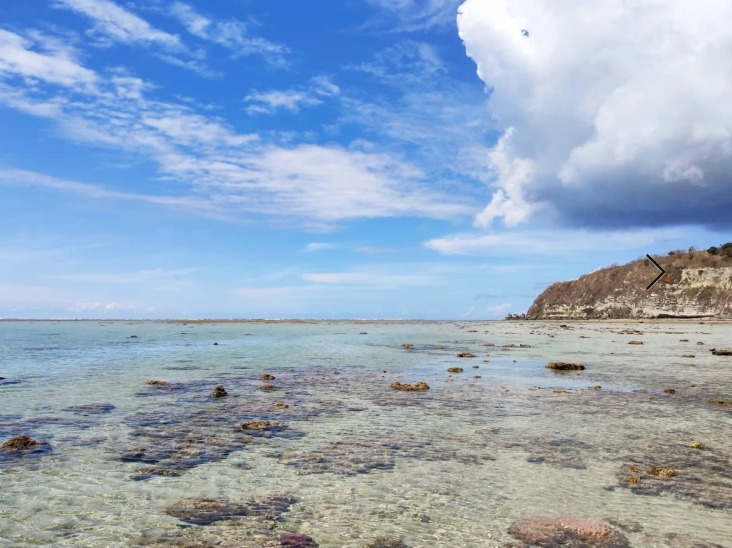
Papani Beach (6 on the map)
Another hidden treasure of the Small Land is the Papani Beach, located on the Eastern side of the Northern point of the island. I’ve heard it is wonderful although I haven’t had a chance to see it yet. It is a struggle getting there but the beach is worth it. You have a choice to either walk there during low tide from the Badamier Beach or hike there by the circuit going around the lake and then go down the cliff using ropes. I don’t really see myself doing it with Slatki in the baby carrier, but encourage all childless couples to discover this beach! This place is also famous for its pools during low tides.
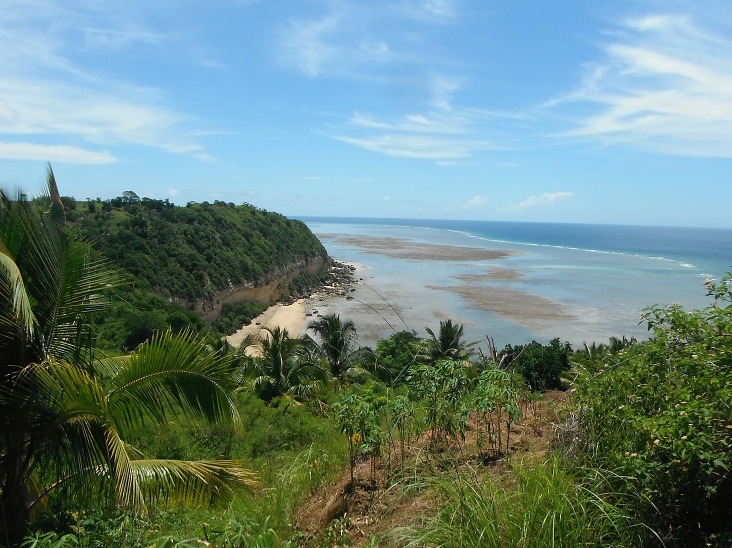
Fishermen's Beach (7 on the map)
This beach is located across the Christian graveyard and close to the gas station. I wouldn’t come here for swimming, but rather for a walk along the beach where you can observe the everyday life of the local fishermen. For example, for years, on a daily basis they gather to play domino in a small hut next to the beach. You can also see children from the corrugated metal houses playing around. It is a sort of charming fisherman’s village frozen in time.
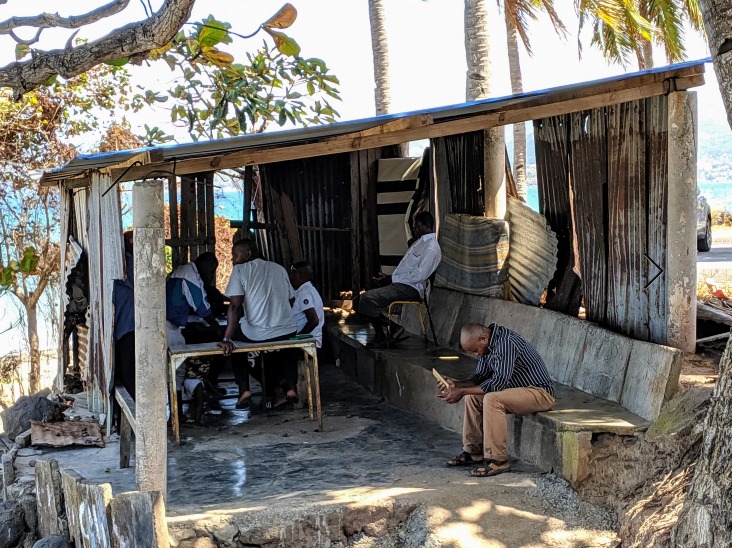
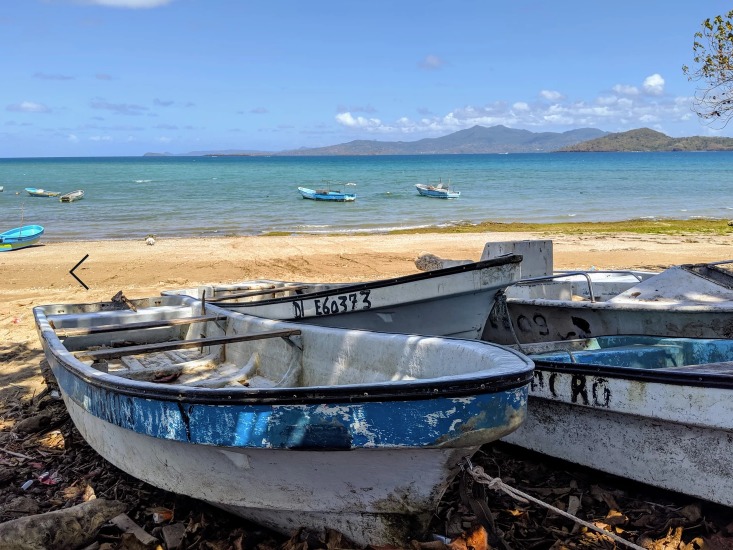
NATURAL SITES
Dziani Lake (8 on the map)
This crater lake (« dziani » means « lake » in shimahorais) is the last volcanic expression of Mayotte creation. Ever since I read « Tropic of Violence » by Nathacha Appanah, I dreamt of visiting this pool of emerald water in the ornament of the tropical jungle because it is such a mythical place for the Mahorans. They believe that’s where spirits, or djins, live and often organise religious rituals at the bottom of the crater. There is a hiking path around the lake that takes about 1,5 hours. The hike is not complicated and is feasible with a baby in the carrier. Beware, however, that there is little shade along the way, so take a lot of water and hold your kids (if they walk by themselves) by the hand as the path is narrow. I strongly discourage you from going down to the bottom of the crater, unless you want to be eaten to death by mosquitoes. Even though walks around the lake are more pleasant in austral winter, I advise you to come here at different times of the year to witness the green madness of the rainy season as well.
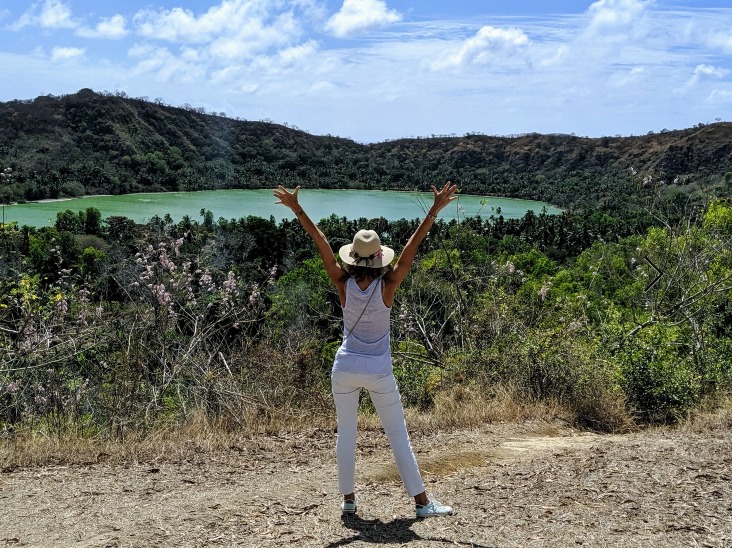
Badamiers Mudflat (9 on the map)
Situated at the Boulevard des Crabs, right after the Moroccan restaurant, the entry to Badamiers Mudflat is indicated by a sign of the the coast Conservatory. Behind, there is a small tourist circuit in the mangrove, accessible during low tide. That’s where you get the meaning of the name of this boulevard – you can see lots of little crabs with red claws running around and hiding in the black mud. You can also observe lots of other habitats of this unique natural site: its flora and fauna. There are other mangroves around on the Big and Small Lands, but no other one offers a real promenade, allowing you to walk around without sinking in the mud.
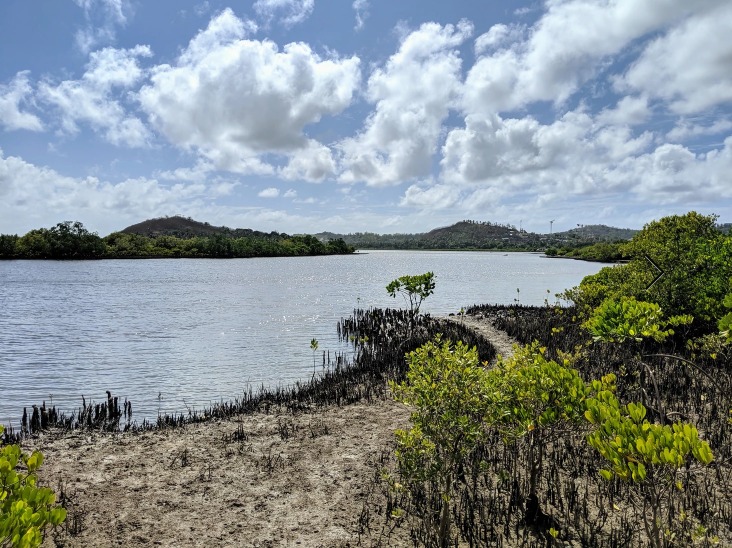
Vigie Viewpoint (10 on the map)
If you take the right side on the fork leading to the Moya Beaches, you will arrive at the Vigie Viewpoint. The breathtaking scenery that opens up from above, if you walk a little along the path, allows you to see the Grande-Terre, the coral reef with its « S-pass » and the landing strip of the airport. Go there during the day though for both the view and the security reasons.v
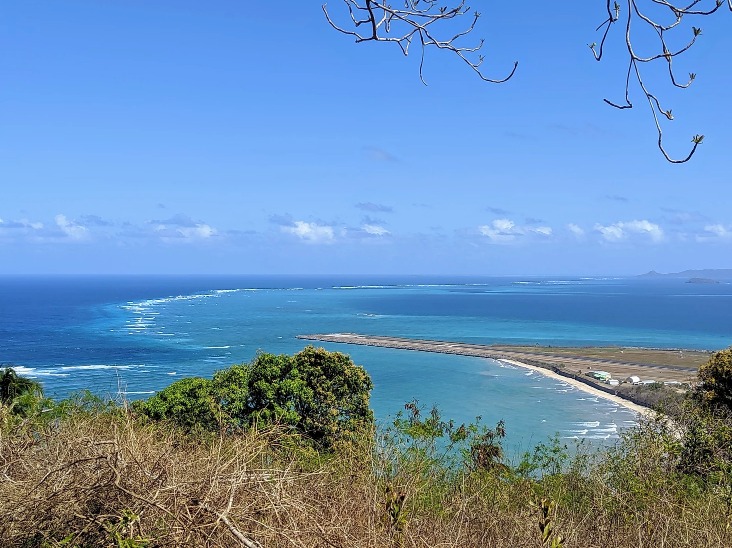
CULTURAL SITES
MuMA (Museum of Mayotte -11 on the map)
Yes, Mayotte also has a museum and it is located on the Small Land. It is small but gives you a good understanding of the unique diversity of the marine species living in the lagoon, as well as Mahoran culture and traditions. You can find there different objects, from animal skeletons to traditional clothes and furniture, to English canons discovered at the bottom of the lagoon. By simply looking, reading or listening to the videos, you can learn a lot about the local way of life. The building that hosts the museum today is located in the historical area of the Small Land called Le Rocher (« The Rock » in English). Since its construction in 1845, this building served as the military barrack, Department of Finances, College Internat, Post Office, and Archives. While the museum is supposed to be relocated to the Governor’s House, considering the state of the latter, this is not going to happen soon.
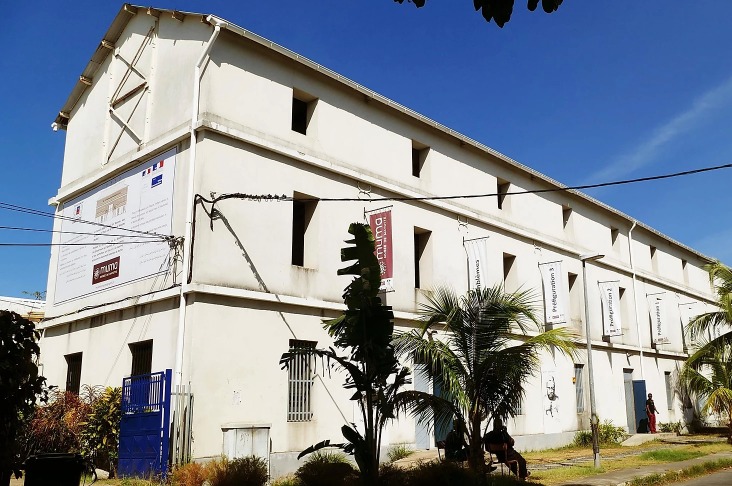
The Governor's House (11 on the map)
Just to make it clear, there are two old Governor’s houses in Mayotte: one on the Big Land and one on the Small one. Both are abandoned, but the first one has been completely ravaged by time and vandals and is dangerous for visitors. The latter one, although in a deplorable state too, is still standing and remains a splendid example of the creole architectural style. It is located on the Dzaoudzi Rock, exactly at the place of the former palace of Sultan Andriantsouly, the old king Sakalave of Boina, who sold Mayotte to France in 1841. By the way, this colonial palace was allegedly designed by Gustave Eiffel’s workshop, although he anyways never came to see the fruits of his work. Severely damaged several times by the cyclon and vegetation, it was occupied by the legionnaires, then was the official residence of the Prefet until 2004. Such a pity that it is not preserved – this slender white building with its two canons and a nice garden used to be a beautiful venue for state visits and important events.
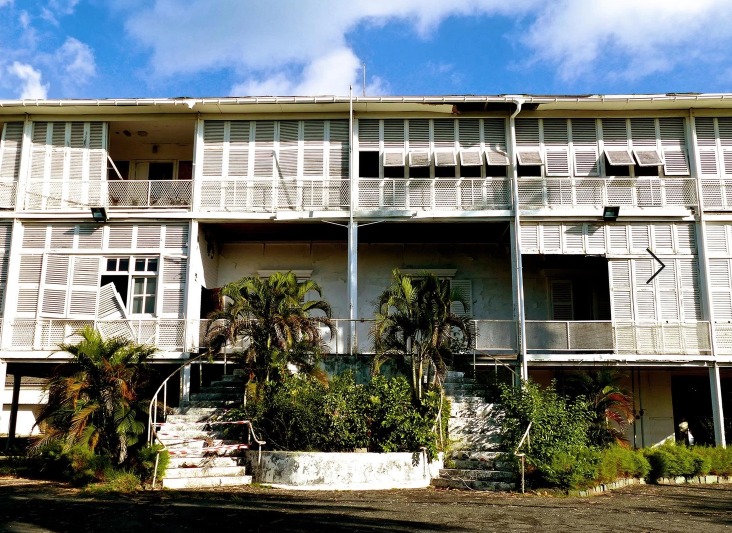
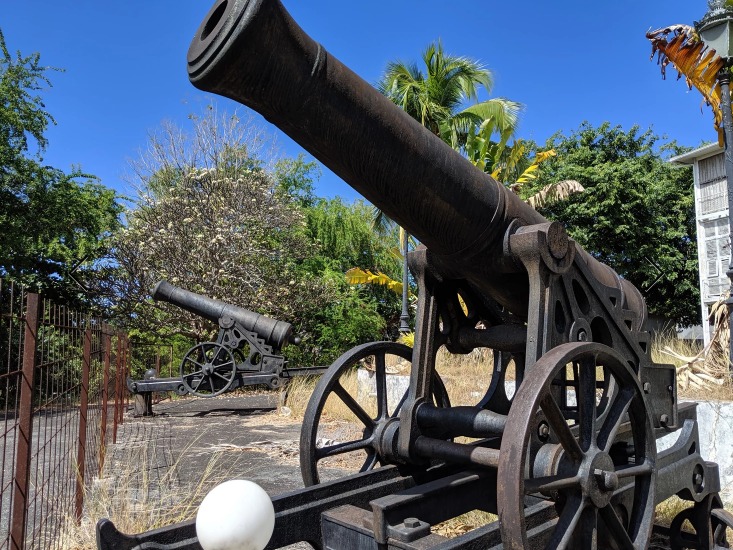
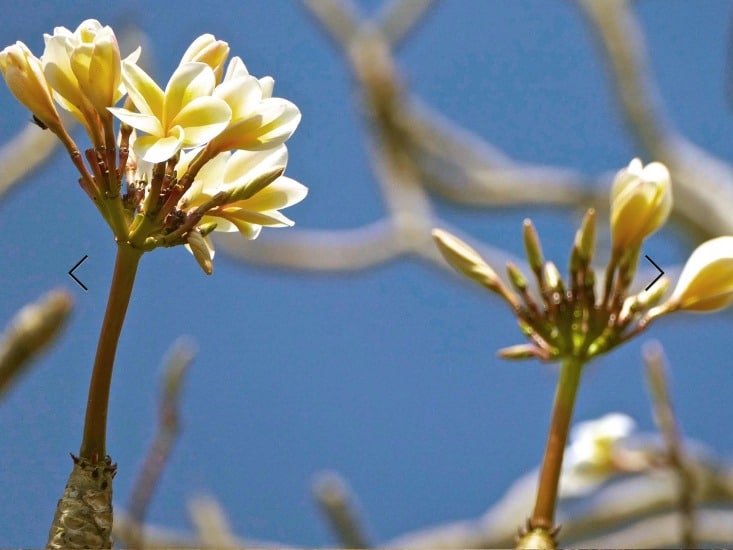
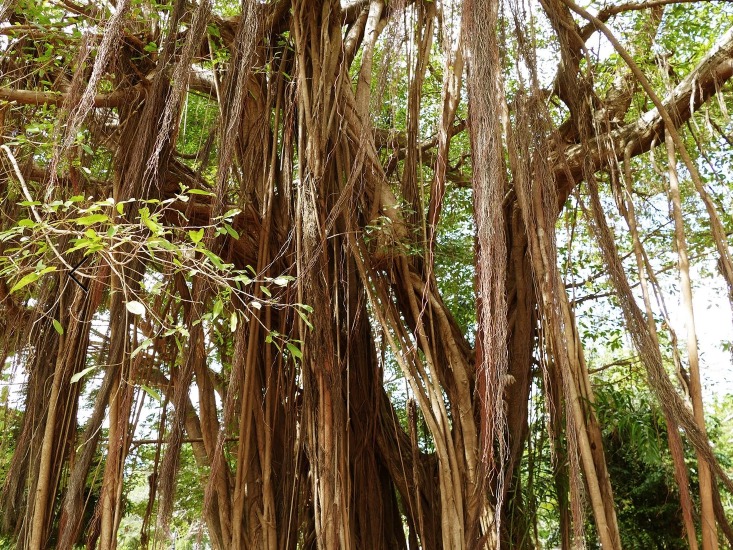
The Doctor's House (11 on the map)
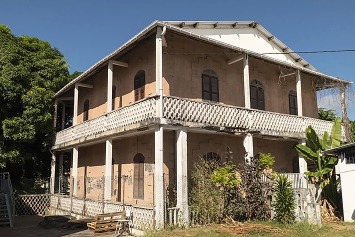
If you take a walk a little bit further, in the direction of the hospital, close to the Catholic Church, there is another colonial architecture building in ruins, though in a completely different style – the Doctor’s House. It is a prefabricated building made in 1847 and imported from the metropolis. Located right next to the hospital, it served as the lodging for the navy doctor in charge of the hospital. Later on, it became the house of the Doctor Martial Henry, the first Mahoran doctor and one of the major actors in healthcare in Mayotte and the Comoros.
Ruins of the Mosque of Polé (12 on the map)
Other ruins, but this time of an old mosque, can be found on the road to the Badamiers Beach, before the listening station of the General Direction of Internal Security, otherwise called « big ears », close to the mango tree on your left. There is not much left of the mosque apart from the debris of the stone walls. An old dead tree has invaded one of them and thrones now over a little door, the size of a very small man. If the Governor’s house is mysterious and sad, then this place is curious and dark. A bit of imagination and you can see it in a typical horror movie. Everywhere around the ruins you see strange objects such as milk cartons, hair combs, rose water bottles, etc. One could think that this is just rubbish, but in fact, these are objects of religious cults. Because this place is sacred for the Mahorans, they come here to perform the so-called grigri, or curses, against someone. Let’s not forget that the Mahoran society, despite being Muslim, is very superstitious and believes in spirits that can possess people.

Old Christian Cemetery (13 on the map)
To continue the « dark » theme, old Christian graveyard is another site that you might visit close to the gas station and opposite the Fishermen’s Beach. I agree, this is not Père Lachaise cemetery in Paris, but it is nice to walk under huge frangipanis that floursh and give off an amazing smell in austral summer. It is curious to see these small tombs from a different era that send you back to the French colonial past. The most interesting tomb here from a tourist point of view is the one of Henry de Balzac, the step-brother of a famous French writer. To find it, just follow the central aisle. The destiny of Henry was far less brilliant than that of his celebrity relative. Having failed at Polytechnic School, Henry decides to gain a fortune in French colonies. He tries his chance first in Mauritius, then Reunion, and finally settles down in Mayotte, where he finds a job as a geometer at the plantation. However, he soon dies in poverty of malaria at a military hospital on the Small Land.
Just nearby you can see a few slender rows of white tombs – these are the soldiers of the French Foreign Legion. Indeed, on the Petite-Terre there is a detachment of this special infantry unit of the French Armed Forces, unique in its nature because it’s open to foreigners and allows them to get French citizenship.
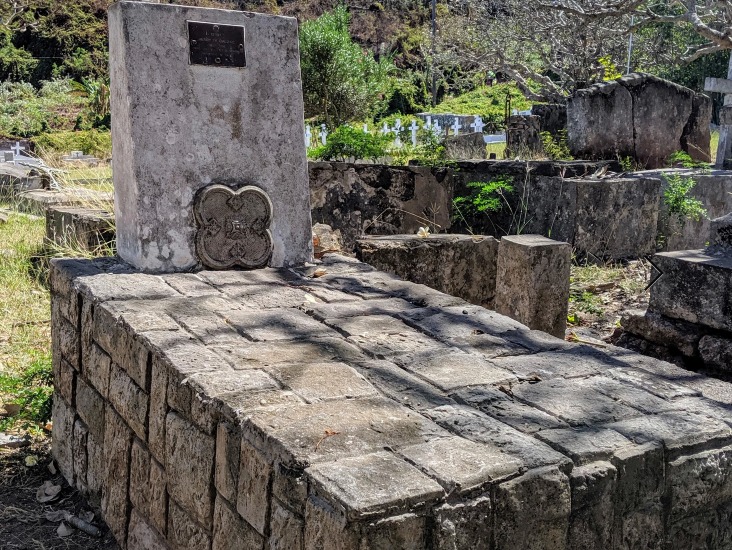
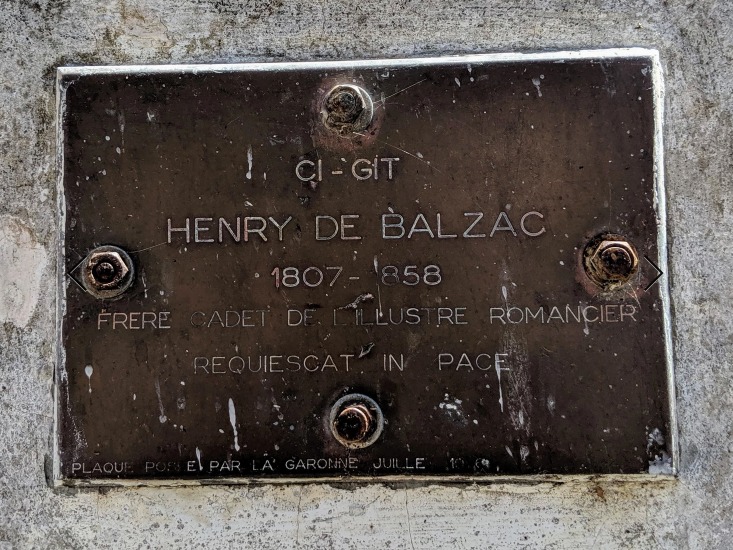
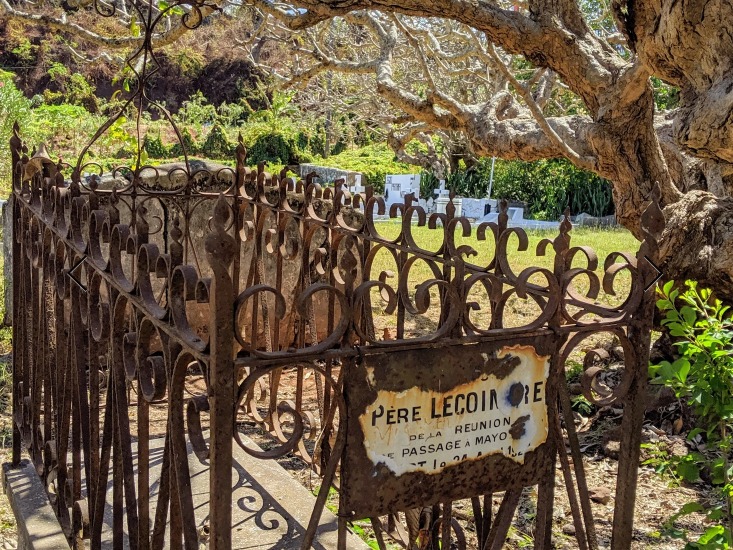
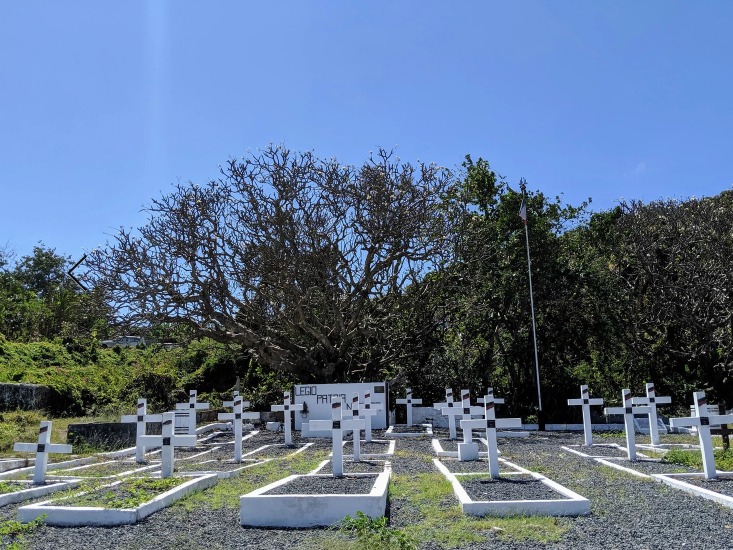
Zéna Mdéré's Tomb (14 on the map)
If the family name of Henry de Balzac speaks by itself, the name of Zéna Mdéré probably doesn’t evoke much to the mzungu (white people). This woman, however, played a very important role in the history of Mayotte. The Commander of the female movement called Les Chatouilleuses (« the ticklers » in English), she triggered a national revolt when Vice-President of the Comoros decided to move the capital from Dzaoudzi to Moroni in 1966, thereby depriving these women of their husbands and Mayotte – of its economic weight. Former director of a koranic school, Zéna dedicated her life to fighting for Mayotte to be a part of the French Republic.

As you can see, Petite-Terre is probably small in size, but not in cultural heritage or natural richness. It is really small, there is no doubt about it. You feel like you are visiting a village. Everyone knows everyone, life is calm and slow, there is also less delinquency, and it’s safer. When you travel to the Small Land, you have an impression of traveling in time and going back to basics. So go with the flow, take your time to discover this island, but if you wish to see it all at once, then I suggest that you take a flight with a two-seater light plane (les ULM de Mayotte).
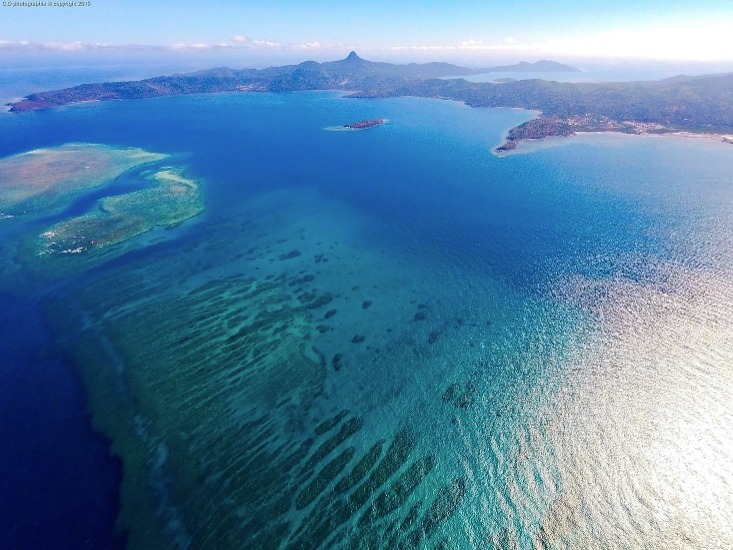
Marina Chaffanjon de www.lademoisellepaysanne.com
